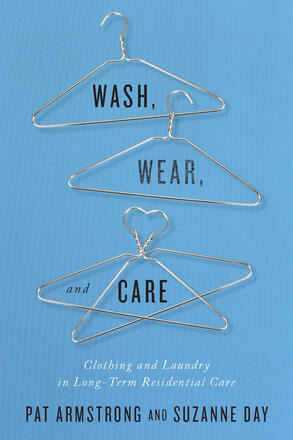
Wash, Wear, and Care
Clothing and Laundry in Long-Term Residential Care
How clothing and laundry provide a window on to the structuring of care and work in nursing homes.
Description
Clothing and appearance are steeped in social and personal significance, conveying individuals’ gender, class, culture, and occupation. In the communal setting of long-term residential care, where residents’ autonomy and mobility are often limited but their dignity and identity are paramount, clothes have become crucial issues and the source of tension for residents, their families, and staff. Assessing the neglected but important labour involved in ensuring that clothes promote respect for both the washers and the wearers, Wash, Wear, and Care analyzes the roles that laundry and clothing play in nursing homes, and raises questions about the wider social, political, economic, and historical contexts of these facilities. Drawing on interviews and observations from twenty-seven long-term residential care homes across Canada, Germany, Norway, Sweden, the United Kingdom, and the United States, Pat Armstrong and Suzanne Day provide an extensive and vital base of information on the daily organization, tasks, meanings, and concerns associated with clothing, laundry, dressing, and appearance in care facilities. An original study of an overlooked subject, Wash, Wear, and Care illuminates the shifting political and economic dynamics at work in long-term residential care homes and the health care system, raising larger theoretical and policy questions in the process.
Reviews
“The authors illuminate vividly the complex work of clothing and laundry and its social and personal significance as an aspect of resident care, offering a compelling argument that care provision and care receipt are inextricably linked.” Jane Aronson, McMaster University